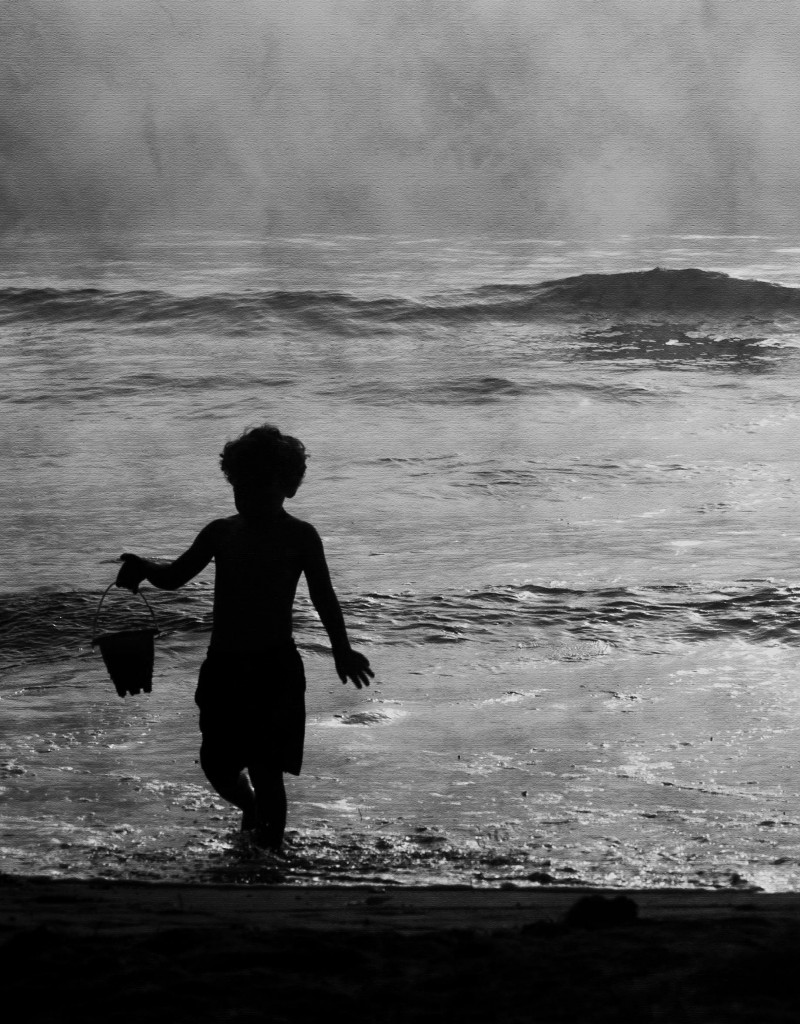Because Sarah wrote about grief on Monday and because today my son would have been 51, so then what else would I bother writing about except grief or rather grief as love’s subset or corollary or unavoidable consequence. Love → grief, love ꝏ grief. That little ꝏ sign, that side-ways 8, that’s the math/astro symbol for infinity. It looks like an infinite loop, like it comes & goes, one implying the other one, practically the same thing. This first ran June 13, 2011.
Last week Jessa wrote about psychiatric diagnoses moving from the quantum to the continuum, that is, from neat little packages to shaded subtleties and something called “a quantifiable baseline of life functioning.” The same week, Ginny published a story about the same diagnostic changes but specifically those for pathological grief – the problem being that normal grief already looks crazy.
I remember being at a meeting of a support group for bereaved parents maybe a year after my son died and listening to a sweet pretty lady tell how her golfing partner had asked her when she was going to get over her child’s death, and how the sweet lady had gunned the golf cart and run the partner over. The group thought her golf-cart reaction was reasonable and appropriate. I thought, with the amount of anger floating around in this group, we should form a roving SWAT team.
Anger, plus depression, numbness, apathy, isolation, bitterness, yearning, confusion, loss of meaning, you name it, newly bereaved people are a mess. So what grief is normal? What’s pathological? In the olden days of Freud, “pathological” was someone unable to detach themselves from the dead person and reinvest emotional energy in a living one, or maybe in a cat. The detach-and-reinvest model isn’t talked about any more but I suspect it still underlies the idea of pathological grief. Prigerson et al. — the world-class, experienced psychologists and psychiatrists who wrote the article Ginny cited — used not “pathological” but “prolonged” grief, and said that the field has had no explicit and standardized criteria for it
Prigerson et al. made an intelligent, thorough, and valiant attempt to create some criteria, and even though they’re trying to do science with the uncontrollable variables of the human mind, I don’t doubt them. Some bereaved people seem just too angry, depressed, bitter, yearning, isolated, etc. for too long; they’re in too much pain, they’re functioning too badly. When I met such people in the bereavement support group or while interviewing for a book I wrote, I felt they were unreachable, I couldn’t see where they were, they were in a dark little enclosed place — in a coffin, I thought, in their children’s company in death.
I did have a brief doubt about how long a person has to look crazy before being diagnosed as “prolonged.” The first years after my son died, I looked like a cubist-period Picasso and life looked like death, a flat back lake melting into a flat black infinite sky. By about year 4, I had cleaned up the house, was returning phone calls, meeting deadlines, and generally taking an interest again. That seems the usual time frame: after about 4 years, you’re indistinguishable from normal. Prigerson et al. interviewed people up to 2 years, well inside the 4-year window. But they weren’t finding 100 percent of their interviewees bug-nuts diagnosable, so I assume they took the worst cases and declared them “prolonged.” So, ok. After all, they’re looking for the “quantifiable baseline of life functioning” that Jessa mentioned, for a gray scale of dysfunction. So to put it all together, psych research says that after a couple years, some people just haven’t detached and reinvested enough that they can function normally; and now not-normal is quantified.
Here’s my only caveat: refine that word, “detach.” One day after I’d begun working on my book, I stepped wrong off a curb and fell, cut my knee badly, and went to my family doctor. He began stitching up the cut, and because he’s a gregarious fellow and knows I’m a writer, he asked me what I was working on. I told him. “That’s a subject no one wants to talk about,” he said. “People suppress that.”
I thought he meant people who had not lost children don’t want to talk about children’s deaths, agreed with him, and let the subject drop. He made a stitch.
“I lost a child, you know,” he said.
“I didn’t know that,” I said. “I’m so sorry.”
“Well, it was a long time ago. It was just a few months old, bad congenital heart problems,” he said in the off-handed, seen-it-all way that old doctors have. “I never think about it.”
“How long ago?” I asked.
“Thirty years,” he said. “It doesn’t affect me. The reason I think it doesn’t is, you don’t have a chance to get close in just a few months.”
I don’t remember him referring to this baby as “he” or “she,” only as “it,” an age, and a fatal condition. I thought, Ok, maybe he didn’t get close and thirty years is a long time, and I dropped the subject again.
“Are you going to put me in your book?” he said.
“I’d love to,” I said. “I’ve had trouble finding fathers who will talk about it. The interview would take several hours.”
He said, “I’d have to be anonymous,” made a tricky knot, then reconsidered.
“No, I don’t want you to interview me,” he said. “I don’t want to talk about it. I don’t want to dredge it all up. It would hurt too much.”
I thought I’d let that pass but couldn’t. “If it didn’t bother you too much,” I said, “maybe it wouldn’t hurt to talk about it.”
He started laughing. “You really know how to hurt a guy, don’t you,” he said. “Now I have to go see a psychiatrist.”
So before I left, I made a bargain with him. I would ask him again in a month, and if he still said no, then no. A month later, he still said no. “It was so long ago,” he said. “Time is the great healer and I don’t want to open up those old wounds.”
“Thank you for considering it,” I said, and thought, thirty years and a baby he didn’t get close to, and wounds that can still be opened.
“Detach.” For a long time, I had regular dreams in which my son was pale and weak, so sick he was going to die; or he was shut up and dying in a room I couldn’t get into; or he was alive right then but he’d have to go back to being dead. These dreams were unspeakable. But now, 24 years later, I don’t have them any more. In my dreams now he’s alive and going about his business as usual. Sometimes I dream questions, can he go back to school? is he not dead? And even in the dream, I know the answers: of course he can, of course he isn’t. Here he is, he’s right here.
_____
Parts of this post have come from a Mar 4, 1997 op-ed I wrote for USA Today (behind a paywall), and from my book, linked to above.
Photo credits: top – Kevin Dooley; bottom – Eric Vondy


Peace, memory, and joy to you, Ann.
Oh you too, Joann, you too.
You’ve laid me low, thank you, thank you.
Oh Craig.
Thank you Ann, thank you always.
Oh Annie, such courage you have.
You will always inspire me.
Oh Kimmie, we certainly have courage together. No choice, is there.
That doctor, wow… Grief is profound. In some ways, having children has made me feel much closer to death, and anxious about it all the time. But then again, I’ve been to four funerals this year, and came away from each feeling deeply moved (inspired, even) by a community of grievers. It‘s like death brings out the worst and the best of life, somehow? Anyway I’m glad the memories of your son are happy ones now.
Grief for me is timeless. Of course, one re-enters normal living and the ache of missed loved ones becomes normalized too. That said, your essay has brought me to tears. Life is filled with loss, but we carry on. Thank you.
The “good death”- when my mom was dying I would wake at early hours and read about death on a blog from a young mortician (http://www.orderofthegooddeath.com/about). It was a comfort to read about death in all sorts of cultures and how people accept it. I am at year one (sounds like an addict) I still have the sadness/pain of missing her voice and face, I hope by year 3 or 4 its easier.